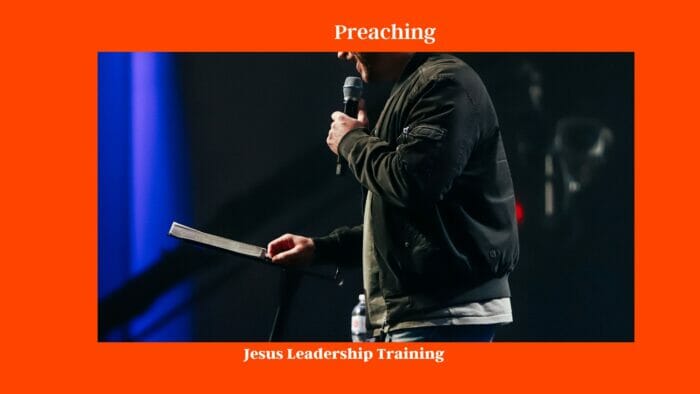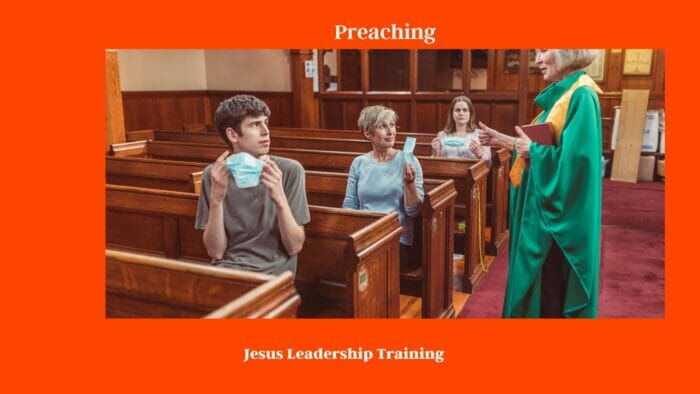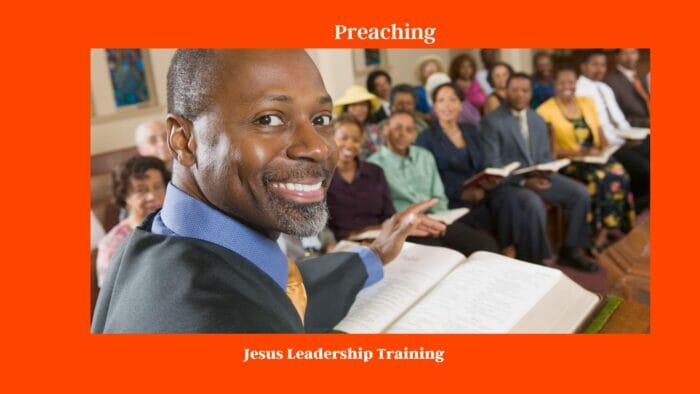Different Preaching Styles – In this comprehensive article, we delve into the world of preaching, exploring its meaning, biblical definition, different preaching styles, modern techniques, and various methods of preaching. Learn about the different types of preaching and gain insights into this ancient art form.
Table of Contents
Different Preaching Styles
Preaching is an ancient art form that has been an integral part of religious and spiritual traditions across cultures and civilizations. It serves as a powerful means of communication, spreading knowledge, inspiring faith, and encouraging positive transformation in individuals and communities. In this article, we will explore the multifaceted world of preaching, its various styles, and the techniques employed by modern preachers to engage and connect with their audiences. Let’s embark on a journey to understand the essence of preaching and its significance in today’s world.
here are some bullet points describing different styles of preaching:
- Expository Preaching:
- Focuses on systematically teaching and explaining a specific passage or book of the Bible.
- Emphasizes the exposition of Scripture, making it the central message of the sermon.
- Topical Preaching:
- Addresses specific topics, themes, or issues by selecting and combining relevant Bible passages.
- Allows for flexibility in addressing contemporary or relevant subjects.
- Narrative Preaching:
- Presents biblical stories and narratives in a compelling and storytelling style.
- Draws lessons and applications from the characters and events in the narratives.
- Apologetic Preaching:
- Defends and explains the Christian faith, often addressing questions and objections raised by non-believers.
- Focuses on providing reasons and evidence for Christian beliefs.
- Evangelistic Preaching:
- Aims to lead people to faith in Christ, presenting the message of salvation and inviting response.
- Often used in outreach events and evangelistic campaigns.
- Pastoral Preaching:
- Provides spiritual guidance, comfort, and encouragement to the congregation.
- Addresses the needs, challenges, and concerns of the church community.
- Topical-Expository Preaching:
- Combines elements of both topical and expository preaching by addressing specific topics through in-depth study of relevant Bible passages.
- Biographical Preaching:
- Focuses on the lives and experiences of biblical characters or historical figures.
- Extracts lessons and principles from their journeys and experiences.
- Illustrative Preaching:
- Uses stories, anecdotes, and real-life examples to illustrate and reinforce biblical principles.
- Aims to make the message more relatable and memorable.
- Liturgical Preaching:
- Follows a set liturgical structure and may be common in traditional church settings.
- Aligns the sermon with specific seasons and themes in the church calendar.
- Hortatory Preaching:
- Encourages and motivates the congregation to action, often emphasizing the application of biblical truth to daily life.
- Calls for a response or commitment from the listeners.
- Exhortational Preaching:
- Urges believers to live out their faith more fully and passionately.
- Challenges the congregation to grow spiritually and pursue holiness.
- Youth or Youth-Centric Preaching:
- Adapts the preaching style to engage and resonate with a younger audience.
- Addresses topics and issues relevant to youth culture and challenges.
These different styles of preaching offer diverse approaches to communicating the message of the Bible and meeting the spiritual needs of congregations in various contexts. Preachers often choose the style that best aligns with their congregation’s needs and the message they want to convey.
What is Preaching?
Preaching can be defined as the act of delivering a spoken message with the intention of teaching, inspiring, guiding, or motivating an audience. It often takes place in religious settings, where preachers convey spiritual or moral lessons based on sacred texts or personal insights. However, preaching is not limited to religious contexts; it can also be found in educational, political, and motivational arenas.

Meaning of Preaching
Preaching goes beyond the mere recitation of information; it aims to evoke emotions, challenge beliefs, and inspire action. Effective preaching requires the speaker to have a deep understanding of the subject matter, a genuine passion for the message, and the ability to connect with the audience on an emotional and intellectual level. A skilled preacher can leave a lasting impact on their listeners, encouraging them to reflect on their lives and make positive changes.
What is the Biblical Definition of Preaching?
In a biblical context, preaching is closely associated with proclaiming the word of God and sharing the teachings of Jesus Christ or other spiritual figures. The Bible itself contains numerous instances of preaching, where prophets, apostles, and other religious leaders conveyed divine messages to their followers. The biblical definition of preaching emphasizes the importance of spreading the message of love, compassion, and righteousness to build a stronger and more connected community.
Preaching Styles
The art of preaching has evolved over the centuries, giving rise to various preaching styles, each with its unique approach and focus. Let’s explore some of the prominent preaching styles used by preachers worldwide:

Entertainment
Entertainment-based preaching aims to engage the audience through captivating storytelling, humor, and interactive elements. This style recognizes that people are more likely to remember and internalize messages when they are presented in an entertaining and engaging manner.
Preacher Focused
Preacher-focused preaching places the spotlight on the personality and charisma of the preacher. The emphasis is on the preacher’s personal experiences, anecdotes, and insights, making the message more relatable and compelling.
Verse by Verse
Verse-by-verse preaching involves a detailed examination of sacred texts, breaking down passages and exploring their meanings, historical context, and relevance to modern life. This style is prevalent in expository preaching.
Modern Preaching Techniques
As society evolves, so do the methods of preaching. Modern preachers utilize various techniques to adapt to the changing needs and preferences of their audiences. Let’s explore some of these contemporary preaching techniques:
Contemporary
Contemporary preaching embraces modern language, cultural references, and relevant topics to connect with contemporary audiences. It bridges the gap between ancient wisdom and present-day challenges, making religious teachings more accessible and applicable.
Culture
Cultural preaching takes into account the cultural background, norms, and values of the audience. It seeks to address issues specific to the community, offering insights and guidance that resonate with their daily lives.

Historical
Historical preaching delves into the rich history of religious traditions, exploring the teachings of past spiritual leaders and drawing parallels to contemporary circumstances. This technique allows listeners to understand the continuity and timelessness of spiritual wisdom.
What is Vision Casting – Proverbs 29:18 says, “Where there is no vision, the people perish
Check this vision – I would follow this – Greg Gaines
Audience Focus
Audience-focused preaching involves understanding the unique needs and interests of the listeners. Preachers tailor their messages to address the concerns of their specific audience, fostering a sense of connection and relevance.
5 Types of Preaching
The art of preaching encompasses various methods, each serving a specific purpose and catering to different aspects of spiritual growth and understanding. Let’s explore the five primary types of preaching:
Expository
Expository preaching involves a detailed and systematic analysis of a particular biblical passage. The preacher breaks down the text, explaining its historical context, linguistic nuances, and theological implications, guiding the audience to a deeper understanding of the scripture.
Topical
Topical preaching centers around a specific theme or subject rather than a particular biblical passage. The preacher compiles relevant scriptures from various parts of the Bible to create a comprehensive message that addresses the chosen topic.

Historical
Historical preaching focuses on significant events and figures in religious history. It draws lessons and inspiration from the lives of prophets, saints, and other influential spiritual personalities, applying their experiences to contemporary challenges.
Narrative
Narrative preaching employs storytelling techniques to convey spiritual messages. The preacher weaves captivating narratives that connect with the human experience, making complex ideas more relatable and memorable.
Storytelling
Similar to narrative preaching, storytelling preaching relies on the power of stories to communicate moral and spiritual lessons. It often includes personal anecdotes and real-life examples to evoke emotions and inspire action.
Methods of Preaching
In addition to different preaching styles and types, preachers utilize various methods to effectively deliver their messages and engage their audiences. Let’s explore some common methods of preaching:
Topical
Topical preaching involves selecting a specific theme or topic and then finding relevant scriptures from the Bible to support the message. This method allows preachers to address contemporary issues while anchoring their teachings in the sacred text.
Textual
Textual preaching focuses on a single verse or a few consecutive verses from the Bible. Preachers dissect the selected text, examining its original language, historical context, and application to modern life.
Expository
Expository preaching, as mentioned earlier, involves a thorough and systematic analysis of a particular passage from the Bible. This method requires a deep understanding of the scripture and the ability to present complex theological concepts in a clear and accessible manner.
Final Thoughts (Conclusion)
Preaching remains a powerful and influential medium of communication, touching the hearts and minds of people across cultures and generations. Whether delivered in religious institutions, educational settings, or public platforms, effective preaching has the potential to inspire positive change and foster spiritual growth. From the traditional verse-by-verse approach to the contemporary narrative style, each form of preaching offers unique insights and opportunities for personal transformation.
As we embrace the diversity of preaching styles and techniques, we recognize that the essence of preaching lies in its ability to connect with people on a deeper level, offering guidance, hope, and inspiration. In a rapidly changing world, the art of preaching continues to evolve, resonating with new generations while upholding timeless truths.
Best Bible Encyclopedias and Dictionaries
Below is a table featuring some highly regarded Bible Encyclopedias and Dictionaries along with their publishers and websites where they can be found or purchased.
| Title | Publisher | Website |
|---|---|---|
| The International Standard Bible Encyclopedia | Eerdmans | Eerdmans |
| Zondervan’s Pictorial Bible Dictionary | Zondervan | Zondervan |
| Easton’s Bible Dictionary | Thomas Nelson | Thomas Nelson |
| Holman Illustrated Bible Dictionary | B&H Publishing Group | B&H Publishing Group |
| The New Unger’s Bible Dictionary | Moody Publishers | Moody Publishers |
| HarperCollins Bible Dictionary | HarperOne | HarperOne |
| Vine’s Complete Expository Dictionary of Old and New Testament Words | Thomas Nelson | Thomas Nelson |
You can generally find these resources on the publishers’ websites, as well as other online book retailers such as Amazon or Christianbook. It’s always good practice to confirm availability and review additional details on the specific websites or other reliable online bookstores.




